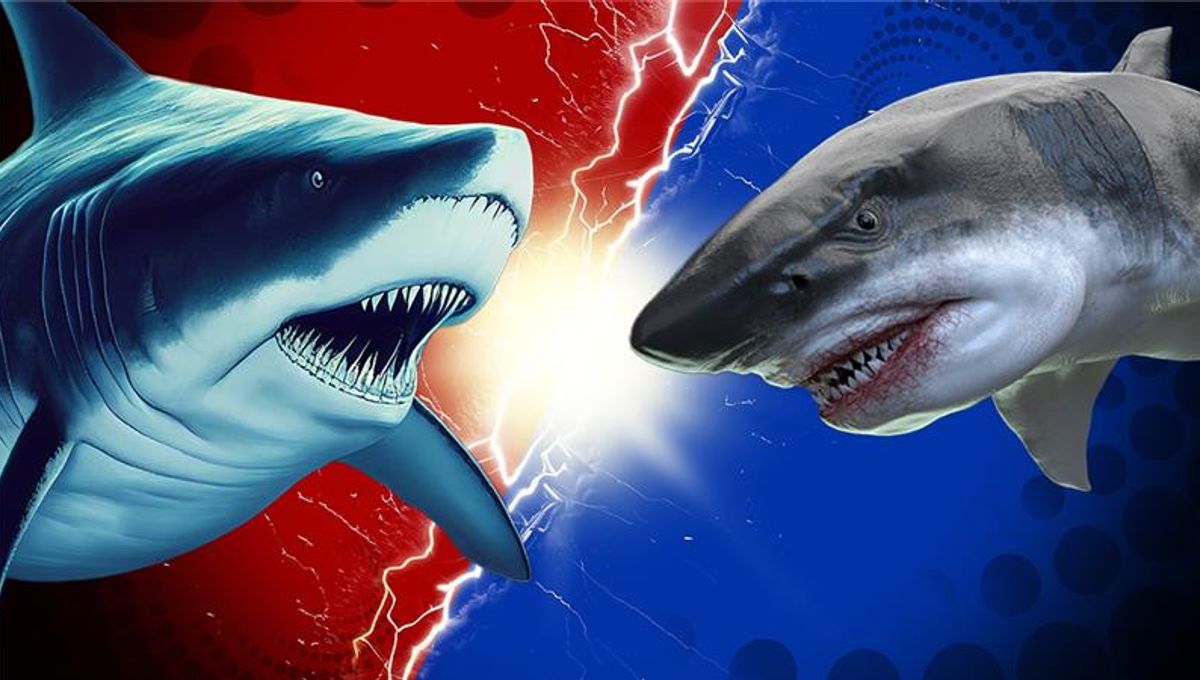
Some fossilized teeth from giant ancient megalodon sharks have unique scratches on them. These scratches, researchers believe, were possibly caused by the serrated cutting edge of other megalodon teeth, suggesting that these prehistoric leviathans may have spared with one another.
ADVERTISEMENT GO AD FREE
Many people have probably heard of megalodon (Otodus megalodon) by this point, given the success of The Meg and Meg 2: The Trench. These enormous predators, which were thought to grow to around 19.8 meters (65 feet) in length, roamed the world’s oceans until they went extinct around 3.6 million years ago.
Because of the success of this Hollywood depiction, megalodon is often thought to have resembled a giant great white shark, but recent research has shown that it was likely less chunky and more elongated – more like a carrot than a potato. Recent research has also suggested that Meg was possibly warm-blooded as well, which may have contributed to its eventual extinction.
It seems we are now learning more and more about how this incredible species lived and, according to a new study, how they may have interacted.
According to a short report, some fossilized megalodon teeth have marks on them that could have only been produced by other sharks.
Megalodon teeth are the largest shark teeth ever found and have sharp serrated edges. So when these sharks bit marine mammals, such as whales, their teeth left distinct marks in their bones. Researchers found evidence of the same marks on four megalodon teeth recovered from fossil sites in North and South Carolina.
One of these teeth has scratch marks that are perpendicular in relation to its length, which could not have been produced accidentally by a shark biting in a way that damaged its own teeth.
ADVERTISEMENT GO AD FREE
“We do not know under what circumstances any of the O. megalodon teeth described herein came to be marked by another O. megalodon tooth. One might imagine that the simplest way to account for O. megalodon-bitten O. megalodon teeth would be that two teeth in opposing jaws struck each other during occlusion, the serrated cutting edge of one marking the other”, the team wrote.
“However, in lamniform sharks [of which megalodon belonged], the upper jaw protrudes beyond the lower jaw to such an extent that this would be unlikely.”
The team raise various possible explanations for how these teeth may have been marked. Firstly, the teeth may have remained in the shark’s mouth after being dislodged. In this situation, the dislodged teeth could have then been struck and marked by an “in situ occluding tooth”.
“Some extant shark species will ingest their own teeth, possibly unintentionally or as an intentional means of recycling the calcium phosphate”, the team explained.
ADVERTISEMENT GO AD FREE
Another explanation is that teeth were marked by the same animal after it bit into its prey. It is possible the teeth became dislodged in the flesh of its meal, and then its own teeth scratched up against the ones it lost.
But the final possibility is the most intriguing: were megalodons fighting one another with their teeth?
“[W]e envision the possibility of an antagonistic encounter between two O. megalodon, perhaps during a territorial dispute to establish a feeding hierarchy, a feeding frenzy, over mating rights, simple aggression, or during the act of cannibalism, either from active predation or scavenging, in which one individual forcefully bit the jaws of its rival […] marking the receiving tooth as part of that episode”, the team say.
The authors note that great white sharks will engage in jaw-to-jaw aggression that may be the result of territorial aggression or mating disputes.
ADVERTISEMENT GO AD FREE
“While this behavior is not well documented in the published literature, footage of this behavior has been captured, including in the National Geographic documentary ‘Cannibal Sharks’”, they add.
So while it may not be possible to say for certain what caused these unusual marks, their existence possibly represents a variety of behaviors that are worthy of additional study regarding the life and ecology of these epic monsters.
The paper is published in the journal Acta Palaeontologica Polonica.
[H/T New Scientist]
Source Link: Ancient Megalodons May Have Dueled One Another With Their Teeth